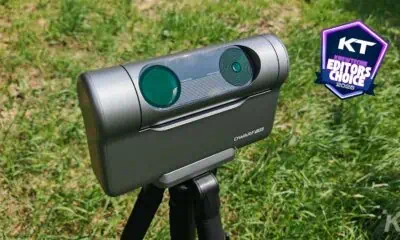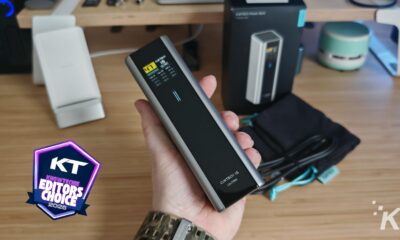
Just a heads up, if you buy something through our links, we may get a small share of the sale. It’s one of the ways we keep the lights on here. Click here for more.
[letsreview postid=”143773″]
The last couple of weeks have been tough for our managing editor, Josiah. He lives in Virginia, and February is usually a tough month when it comes to the weather. There are wind storms, ice storms, snowstorms, and heck, sometimes even the occasional hail storm.
One thing that remains constant is the fact that he loses power every time one of these storms hit. And when he loses power, he loses things like heat, and more importantly, the ability to blog. This is where something like The Jackery Explorer 1000 would help him out immensely.
The Jackery Explorer 1000 is a $999 portable power station. Essentially, at its core, it’s a massive portable battery that’s capable of keeping everything up and running in the event you find yourself without power.

The device features a 1002Wh internal lithium battery, which means on a full charge, you’re able to power a mini fridge for up to 66 hours or recharge an iPhone up to 100 times. Which makes something like this perfect for camping trips, road trips, and the occasional power outage – the possibilities are endless.
READ MORE: EBL Voyager 1000 – a portable power station that’s great for camping trips
And what really brings it home is the ability to charge the power station using the power of the sun. Two SolarSaga panels (retailing for $299) can offer a full charge in just eight hours of direct sunlight. They don’t even have to be plugged into the power station to get the charge either. The device can also be recharged by connecting to a wall outlet (full charge in seven hours) or a car outlet (14 hours).
So, how does it perform? Do the solar chargers actually work? Is it really worth the price tag? Well, let’s find out.
Let’s get some specs and features out of the way:
- 1000 wattage output
- 2000W Surge Power
- 1002Wh(46.4Ah) lithium battery
- Two USB-C, two USB, one DC carport outlet
- Three AC outlets
- Weighs 22lbs
- Easy-to-carry handle
- LCD screen with charge/discharge data and battery life status
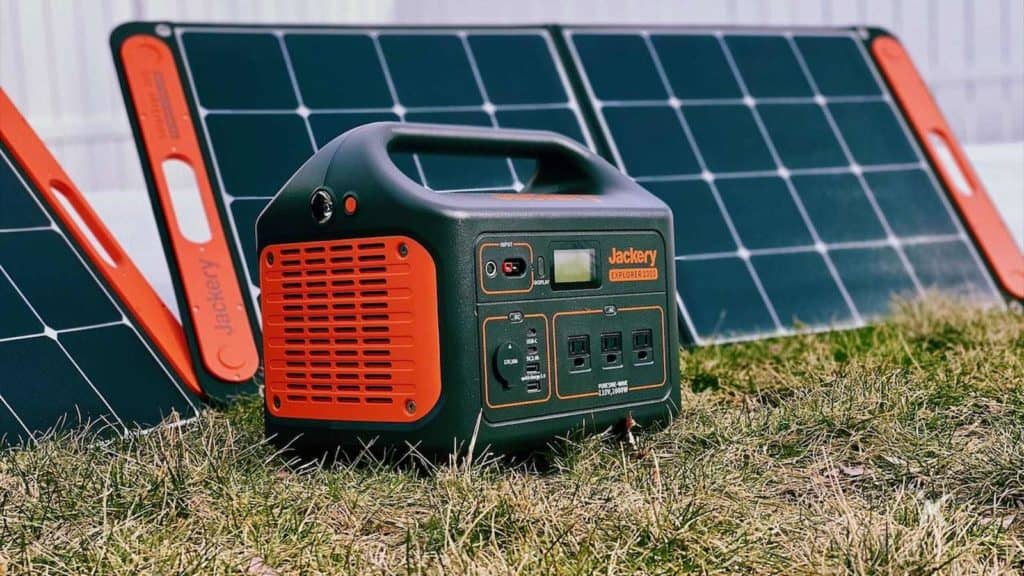
Right out of the box, the Jackery Explorer 1000 feels like something that costs a thousand dollars. It certainly does not feel cheap. The device weighs 22 pounds and it’s housed in an impact-resistant plastic casing. It’s not horrible to look at, but it does resemble a beefed-up lunchbox. A small backlit LCD screen displays the remaining charge percentage and input/output power. All in all, it looks and feels like a power station – nothing groundbreaking here.
Using the Jackery Explorer 1000 is pretty simple. You get three AC outlets which means you’re able to plug in a wide variety of electronics or appliances. All three outlets can be used at the same time, but just note, you have 1000W of headroom. AC and DC can be used at the same time too, but again, if the device exceeds 1000W, the power station will turn itself off.
To put the Jackery Explorer 1000 through its paces, I decided to use it as my primary power source for one full workday. Meaning my 2015 MacBook Pro, 24” Asus monitor, and Apple Watch/iPhone charger would all be getting their juice from the Jackery Power Station. After a 10-hour day, I didn’t even put a dent in it. Starting off at 100% battery life, at the end of the day, the battery was left with 91%. That’s insanely impressive.
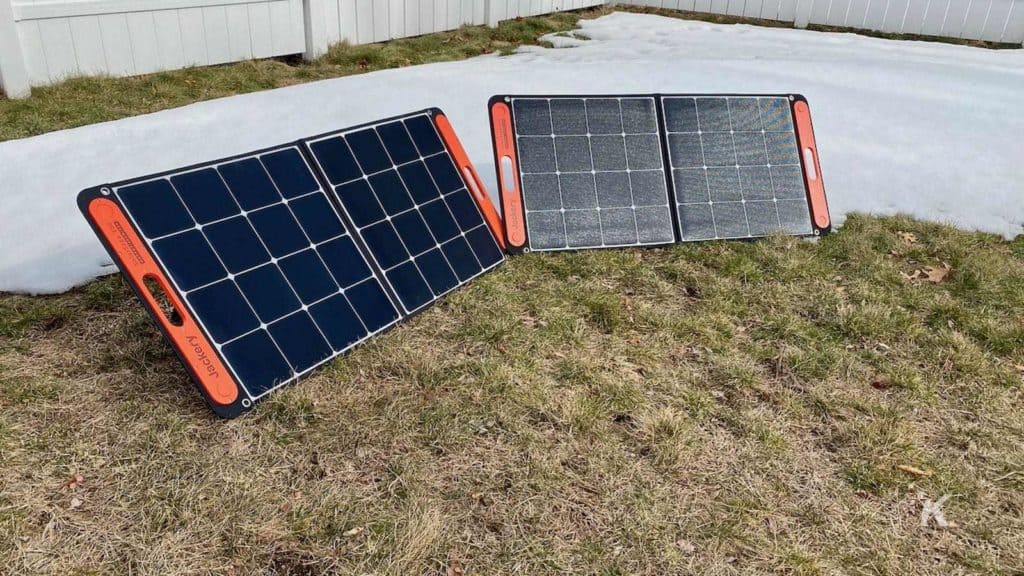
Charging the power station is a breeze too. You get three options: The battery pack can be recharged via a wall outlet or a car outlet, but can also be paired with two SolarSaga panels to receive a full charge in under eight hours of sun exposure. Charging via a wall outlet gets the power station to 100% in seven hours and a car charger will get it there in 14 hours. As you can see, the solar panels get almost the same recharging speed as an AC outlet but keep in mind, the panels will require eight hours of direct sunlight.
The solar panels themselves cost $299 and are not included with the Jackery Explorer 1000. The panels are admittedly kind of big and clunky, but the good thing is that they fold in half for portability. They also feature a kickstand too so you can prop it up in whichever direction the sun is facing. Each panel weighs less than 10 pounds, and they have both USB-C and USB-A direct output for charging up devices without any battery or power station required. The only kicker here is that the panels are not waterproof, so keep that in mind when using them in inclement weather.
Should you buy the Jackery Explorer 1000 Power Station?
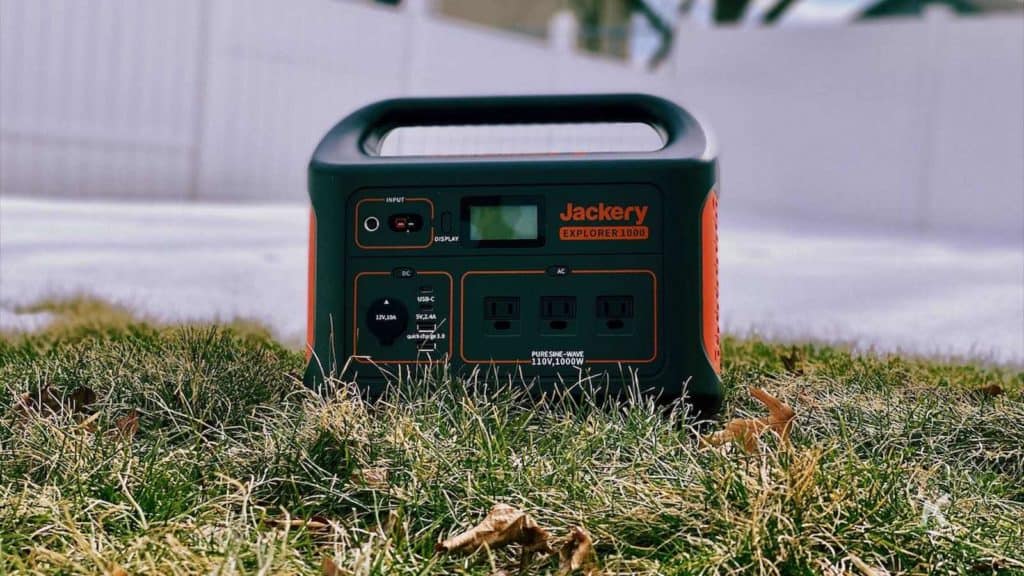
Josiah, if you’re reading this, yes, you should absolutely buy this (seriously, do it). For everyone else, I highly recommend it. If power outages are a normal occurrence at your home and you don’t have a backup generator at your disposal, this power station will get you through your workday and then some.
If you’re someone who does a lot of outdoor activities or road trips, having one of these is a no-brainer. If you’re a backyard warrior and tired of constantly running extension cords from your house, get this and you’ll never have to worry about that again. The added benefit of the solar panels really makes it a worthy off-the-grid power solution.
The Jackery Explorer 1000 Power Station retails for $999. The solar charger panels/battery combo will run you $1,499. Both can be bought via Jackery’s website or via Amazon.
Have any thoughts on this? Let us know down below in the comments or carry the discussion over to our Twitter or Facebook.
Editors’ Recommendations:
- Review: EPOS GTW 270 earbuds – gaming earbuds that don’t suck
- Review: X-Chair X3 – the $1,000 office chair I never knew I needed
- Review: Cyberpunk 2077 – Everything is expendable, including this review
- Review: Colorful GeForce RTX 3070 iGame Ultra OC-V – what a difference a generation makes
Just a heads up, if you buy something through our links, we may get a small share of the sale. It’s one of the ways we keep the lights on here. Click here for more.
























